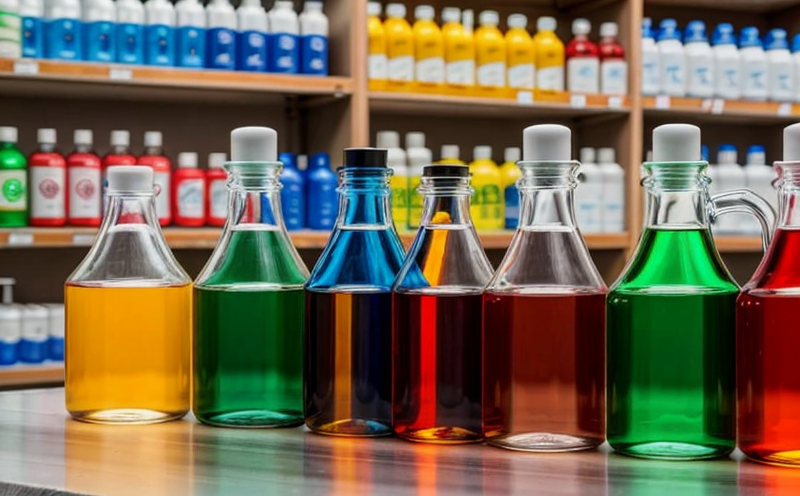Restricted substance compliance testing for military textiles
In today’s demanding defense and security sectors, ensuring that materials meet stringent chemical safety regulations is not only a necessity but also an essential requirement. The rigorous standards set by organizations like the U.S. Department of Defense (DoD) are aimed at protecting personnel from harmful substances present in textiles used for uniforms, protective gear, and other critical items. This service focuses on providing comprehensive restricted substance compliance testing tailored specifically to military textiles.
Our expertise lies in conducting thorough chemical analysis to detect regulated hazardous substances such as per- and polyfluoroalkyl substances (PFAS), heavy metals like lead and cadmium, and volatile organic compounds (VOCs). These tests ensure that the materials used are safe for long-term use by personnel. Compliance with these regulations is crucial not only for meeting legal requirements but also to safeguard the health of those who wear or come into contact with military textiles.
Our approach begins with a detailed understanding of the specific military standards relevant to your project, such as MIL-T-25010B and MIL-T-9045D. These regulations provide clear guidelines for acceptable levels of restricted substances in various textile applications. By adhering strictly to these standards, we can ensure that our testing results are accurate and reliable.
The process involves several key steps: initial sample preparation, analysis using advanced instrumentation like gas chromatography-mass spectrometry (GC-MS) and inductively coupled plasma mass spectrometry (ICP-MS), and finally, comprehensive reporting of findings. Each step is meticulously executed to guarantee precision and reliability.
To further enhance the accuracy of our testing, we utilize certified reference materials and participate in proficiency testing programs recognized by authoritative bodies such as the American Society for Testing and Materials (ASTM) and the International Organization for Standardization (ISO). This commitment to quality control ensures that every test result is trustworthy and can be relied upon when making important decisions about textile safety.
By partnering with us, you gain access to state-of-the-art facilities equipped with cutting-edge technology designed specifically for analyzing complex samples found in military textiles. Our highly skilled chemists and technicians are dedicated to providing the highest level of service, ensuring that your materials meet all necessary regulatory requirements while maintaining the highest standards of quality.
Understanding the complexities involved in restricted substance compliance testing for military textiles is crucial for effective management of supply chains and R&D processes within this sector. Proper implementation can lead to safer products and reduced risk of non-compliance penalties, which could otherwise impact operations significantly.
Scope and Methodology
| Test Parameters | Description |
|---|---|
| PFAS Detection | Detects per- and polyfluoroalkyl substances which are known carcinogens. |
| Heavy Metal Analysis | Identifies concentrations of harmful metals like lead and cadmium. |
| VOC Emissions Measurement | Assesses volatile organic compounds released during use or storage. |
| Fiber Identification | Determines the type of fibers in your textile samples for better precision. |
The methodology employed involves multiple stages starting with sample receipt and preparation, followed by instrumental analysis using specialized equipment. We ensure that all procedures follow internationally recognized standards such as ISO 17025, which guarantees laboratory competence and proficiency.
Our team of experts utilizes advanced analytical techniques including GC-MS for identifying trace amounts of chemicals and ICP-MS for quantifying elements at ultra-low concentrations. These methods allow us to detect even minute traces of restricted substances that might otherwise go unnoticed by less sensitive technologies.
In addition to quantitative analysis, qualitative assessments are conducted using Fourier Transform Infrared Spectroscopy (FTIR) and Nuclear Magnetic Resonance (NMR). These additional tests help confirm the presence or absence of specific compounds within your samples. Together, these comprehensive approaches provide a robust framework for evaluating compliance with relevant regulations.
For each completed test run, detailed reports are generated outlining our findings along with recommendations if any issues were identified. These documents serve as valuable resources during decision-making processes related to material selection and formulation adjustments.
Benefits
Compliance testing for restricted substances in military textiles offers numerous advantages that contribute significantly towards enhancing operational effectiveness and safety standards across the entire supply chain:
Ensures adherence to strict regulatory requirements set forth by governing bodies.
Reduces risk of non-compliance penalties which could disrupt production schedules or lead to costly fines.
Promotes trust among stakeholders including suppliers, customers, and end users by demonstrating commitment to product safety.
Supports innovation within R&D departments by providing accurate data on material performance under various conditions.
Facilitates smoother procurement processes through reliable verification of supplier claims regarding chemical content.
Promotes environmental responsibility by minimizing the use and release of harmful substances into the environment during manufacturing and disposal phases.
In summary, implementing restricted substance compliance testing for military textiles is essential in today’s highly regulated industry. By leveraging our expertise and state-of-the-art facilities, we help clients achieve peace of mind knowing that their products meet all necessary safety standards while contributing positively to sustainability goals.
Use Cases and Application Examples
Uniforms designed to protect soldiers from chemical warfare agents require rigorous testing to ensure they do not contain harmful substances that could exacerbate injuries or cause additional health risks.
Protective gear such as helmets, body armor, and gloves must pass strict chemical safety tests before being issued to troops. Non-compliance can lead to serious consequences if materials leach hazardous chemicals during prolonged use.
New fabric formulations intended for deployment in extreme environments need thorough evaluation to confirm they meet all required standards without compromising on performance or durability.
Aftermarket repairs and replacement parts should also undergo testing to ensure compatibility with original equipment. Any discrepancies could compromise overall system integrity and safety.
In conclusion, restricted substance compliance testing plays a vital role in safeguarding the health and well-being of military personnel while ensuring that critical materials meet stringent performance expectations under diverse operational conditions.





